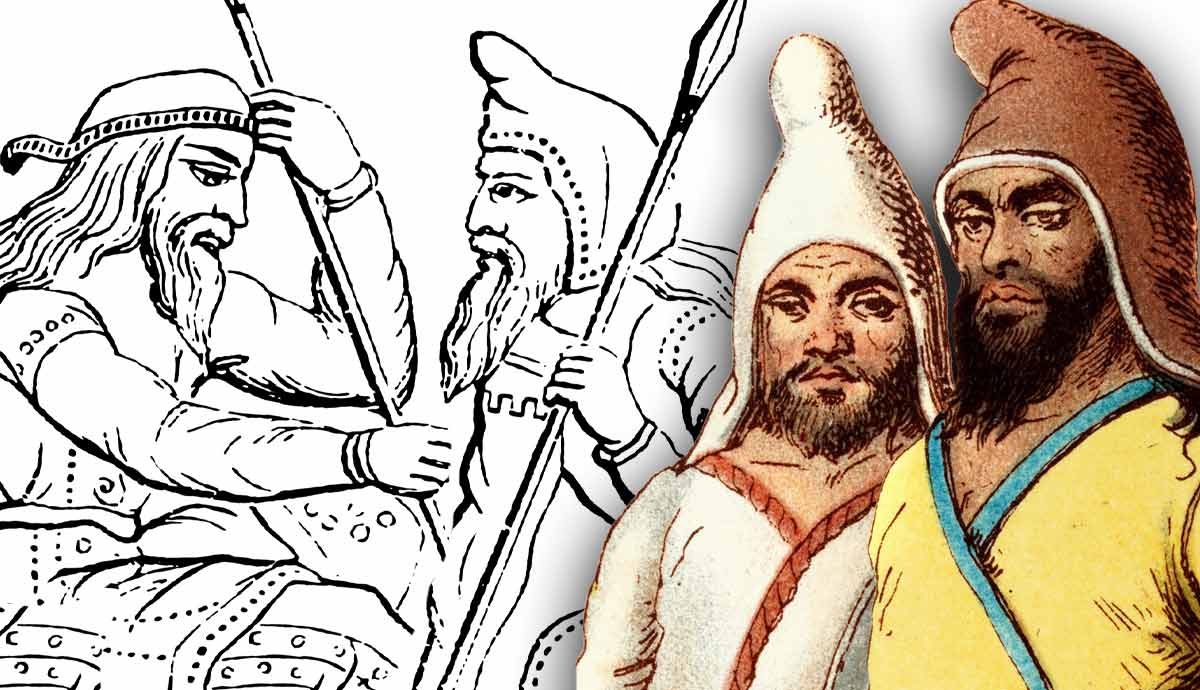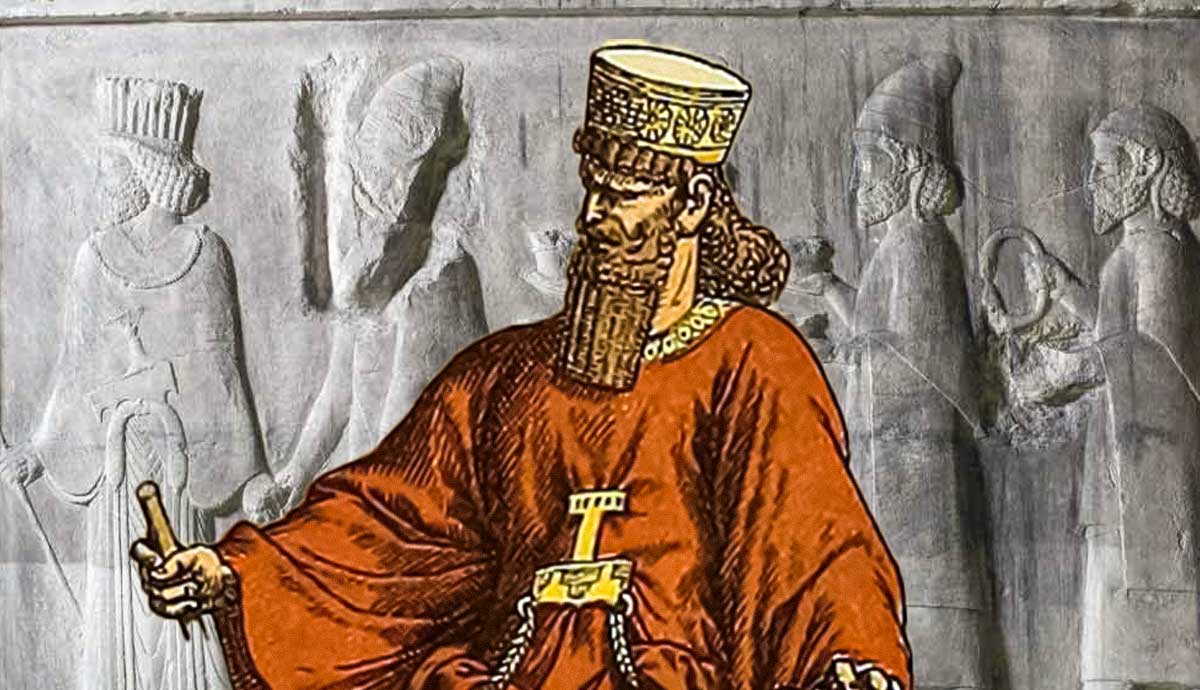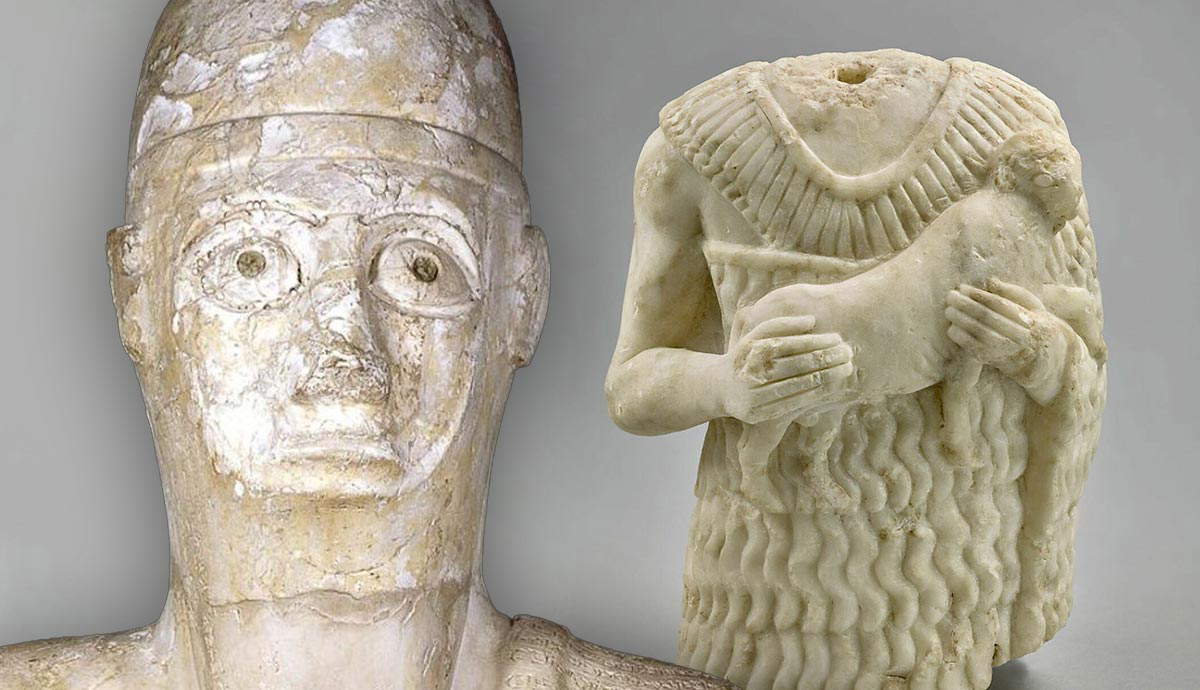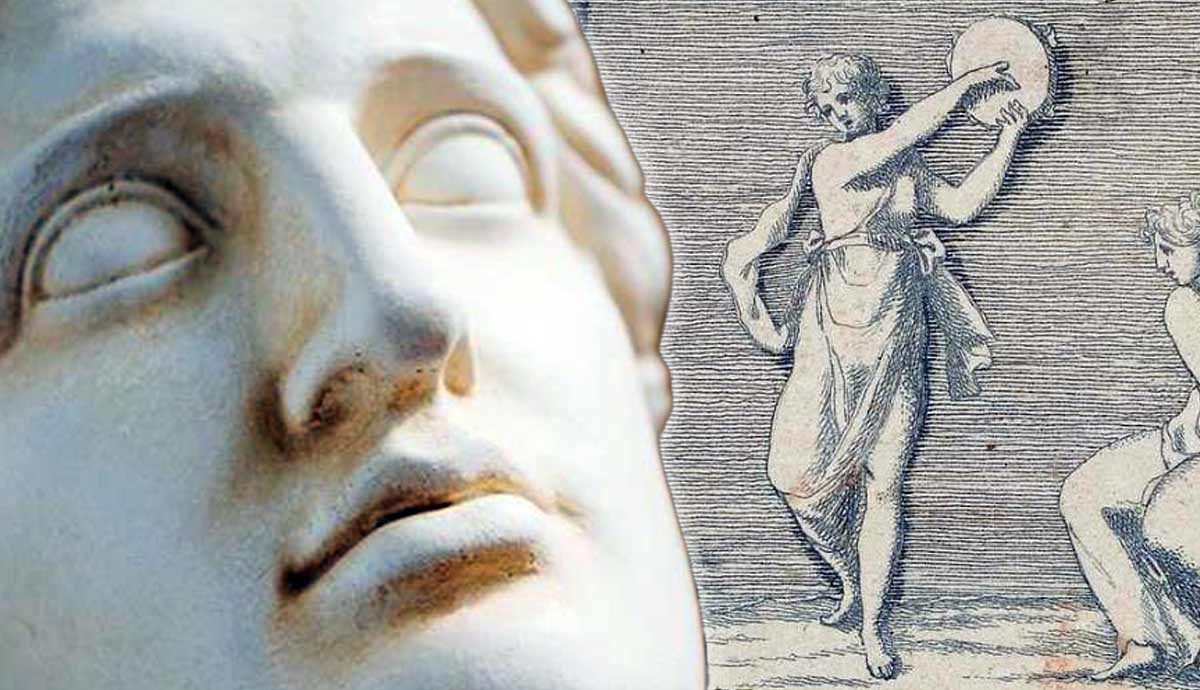
In the early 1st millennium BCE, the Scythians burst onto the ancient Near Eastern geopolitical scene in a frenzy of violence. The upstart Indo-European nomads upended the early Iron Age system that had developed in the region. By the late 7th century BCE, they made themselves one of the region’s major powers. But the ascent of the Scythian Empire was brief. According to the 5th century BCE Greek historian Herodotus, the Scythian Empire only lasted 28 years, and they surprisingly left little evidence of their rule behind. An examination of Assyrian and Greek sources, along with archaeological evidence, reveals that although short-lived, the Scythian Empire played an important role in the Near East’s political transition.
Who Were the Scythians?

Identifying the Scythians has been somewhat problematic for modern scholars for a number of reasons. Although the Scythians spoke an Iranic, Indo-European language, they were not a cohesive group. Like many Eurasian Steppe peoples, the Scythians were nomads who migrated in bands and mixed with different non-Indo-European peoples over the centuries. The name was given to a number of nomadic tribes from the Pontic-Caspian Steppe, with the most important being the 7th-century BCE group that is the focus here. It is important to note that in the Old Persian language, they were known as the Saka, while the Greeks referred to them as the Scythians, which has continued into the modern era.
Scythian Culture

As difficult as it may be for modern scholars to determine who were and who were not Scythians, reconstructing Scythian culture has been equally complex. The Scythians were not a literate society, so they left no written sources. There has been very little Scythian archaeological evidence uncovered as well. Many Scythian artifacts in the Near East have been subsumed by artifacts of the more enduring and dominant cultures of the region. Artifacts from the Steppe can be easily confused with those of other Steppe peoples. Therefore, modern scholars often have to rely on historiographical texts from Assyria and Greece to reconstruct Scythian culture and history.
Rice noted in her seminal work on the Scythians that the primary deity they worshiped, the goddess of fire, Tabiti-Vesta, was pre-Scythian in origin. The Scythians were polytheistic, worshiping a number of different deities, with the Dnieper River playing a central role in their mythology.

The archaeological evidence demonstrates that the Scythians had a strong belief in the afterlife. One of the best-preserved elements of Scythian material culture is their elaborate above-ground tombs. These tombs were built in the kurgan style, often referred to as tumuli, that many Indo-Europeans on the Pontic-Caspian Steppe built. Many of these tombs consisted of a central burial chamber with four smaller chambers. These intricate tombs belonged to high-status Scythians, and because of that, they were filled with valuable material possessions in elaborate burial ceremonies.
The remains of horses have been discovered in many tombs, indicating the importance of this animal that was first domesticated on the Pontic-Caspian Steppe. Other valuable goods, such as weapons, precious metals, and jewelry were also interred with the chieftains and other high-ranking Scythians. Recent examinations of Scythian warrior graves on the Lower Don and Lower Volga rivers have revealed that 20% of them belonged to women. Many modern scholars believe the existence of these female warriors gave rise to the Greek legend of the Amazons and led to the Greeks being fascinated by the Scythians.
Scythian Warfare

Scythian culture was certainly martial in nature. As nomadic people, the Scythians prized their horses, wagons, and chariots, which helped them quickly move across the Steppe. But as much as chariots were an identifiable part of early Scythian culture, they were not used widely on the battlefield in the 1st millennium BCE. Although chariots formed the backbone of Bronze Age Near Eastern armies, Assyrian cavalry made chariots obsolete. Despite this, the Scythians had other battlefield advantages and they also adapted quite nicely to cavalry.
Perhaps the most effective weapon the Scythians wielded was the bow. The compound bow was invented around 1000 BCE on the Steppe by the ancestors of the Scythians, so the Scythians had a long bow-making tradition. Scythian bows were made of animal horns and strung with sinews. The best Scythian bowmen fought on horseback, much like later Steppe peoples, as was depicted on different Assyrian reliefs and in Greek art.

To go with their bows, Scythian warriors also carried swords that could be up to two-and-a-half feet in length. But perhaps what made the Scythians most effective on the battlefield was their ferociousness. According to the 5th-century BCE Greek historian Herodotus, the Scythians committed acts that would make the Assyrians blush.
“As regards war, the Scythian custom is for every man to drink the blood of the first man he kills. The heads of all enemies killed in battle are taken to the king; if he brings a head, a soldier is admitted to his share of the loot; no head no loot. . . Many Scythians sew a number of scalps together and make cloaks out of them, like the ones peasants wear, and often, too, they take the skin, nails and all, off the right hand and arms of dead enemies and use it to cover their quivers with – having discovered the fact that human skin is not only tough, but white, as white as almost any skin. Sometimes they flay a whole body, and stretch the skin on a wooden frame which they carry around with them when they ride.”
The Scythians Enter the Near East

The Scythians swept down from the Pontic-Caspian Steppe in the 9th and 8th centuries BCE. They first entered Anatolia, where they encountered another nomadic people known as the Cimmerians before continuing south. Herodotus detailed the Scythian’s journey:
“The Scythians had entered Asia in pursuit of the Cimmerians whom they had expelled from Europe, a fact which explains their presence in Median territory at this time. From the sea of Azov to the Phasis and the Colchians is a thirty days’ journey for a quick traveller; but it is far from Colchis to Media, and to reach it one has to pass through the country of only one intervening people, the Saspires. The Scythians, however, did not enter Media by this way, but took the much longer upper, or northern route, keeping the Caucasus mountains on their right.”

The Scythians would later continue their war with the Cimmerians, but first, they would meet the most powerful force in the region at the time: the Assyrian Empire. Although Herodotus wrote the most detailed historiographical texts of the Scythians and their culture, he did so hundreds of years after the events. The Assyrians offered first-hand, yet often less detailed and fragmentary, historiographical accounts of the Scythians. After initially conflicting with the Assyrians, the two people made an alliance during the rule of the Assyrian King Ashurbanipal (ruled 668-627 BCE). Often referred to as the Ashguzai or Ishguzai by the Assyrians, the Scythians were at first enemies of the Assyrians but later allies. One particular Annal from Esarhaddon’s reign (680-669 BCE) notes how the Assyrians defeated the Scythians.
“I trod under foot the wicked Barnakeans – inhabitants of Til-Assur, who in the [tongue of the people] of Mihranu are named Pitaneans. I scattered the Mannean people, intractable barbarians and I smote with the sword the armies of Ishpakai, the Scythian (Asgusai) – alliance (with them) did not save them.”
The Scythian Empire

The Assyrians were as clever as they were brutal, so they saw in the Scythians a useful ally that they could use for their own ends. For example, the Scythians turned their attention east to Persia, which was ruled by the Medes. According to Herodotus: “A battle was fought, in which the Medes were defeated and lost their power in Asia, which was taken over in its entirety by the Scythians.”
It should be noted that although Herodotus’ chronology of Scythian history is fairly detailed, the chronology is off and some of the details are wrong. The Scythian defeat of the Medes, which likely took place around 652 BCE, is mentioned after Cyaxares of Media’s victory over the Assyrians at Nineveh in 612 BCE.
Until 652 BCE, the Scythians were mere interlopers in the Near East and without a permanent home. That changed after they defeated the Medes, establishing a kingdom in Media that, according to Herodotus, lasted for 28 years.

“During the twenty-eight years of Scythian supremacy in Asia, violence and neglect of law led to absolute chaos. Apart from tribute arbitrarily imposed and forcibly exacted, they behaved like mere robbers, riding up and down the country and seizing people’s property. At last Cyaxares and the Medes invited the greater number of them to a banquet, at which they made them drunk and murdered them, and in this way recovered their former power and dominion. They captured Nineveh (the story of the capture I will relate in another place) and subdued the Assyrians, all except the territory belonging to Babylon.”
This took place around 625 BCE, but it did not mean the end of the Scythians. Once driven from Media, the Scythians returned to their nomadic ways and went south. Herodotus wrote that the Scythians “next turned their attention to Egypt,” but were turned away by “Psammetichus the Egyptian king.” Psammetichus was the Greek name of Psamtek I (ruled 664-610 BCE), the founder of the 26th dynasty. For the Scythians, the situation meant that they would have to return to their nomadic roots for survival.
The Later Scythians

The defeated Scythians later helped the Medes and Neo-Babylonians defeat the Assyrians in 612 BCE, but what happened to them after that is not precisely known. It is likely that many stayed in the Near East as mercenaries and warriors, while others migrated back north to the Pontic-Caspian Steppe. After the Achaemenid Persian Empire formed in the th century BCE, the Scythians—known as the Saka—were included among the tribute or subject peoples. Saka generally referred to all nomadic peoples in the Achaemenid Empire, and in numerous multi-lingual cuneiform inscriptions from Persia, they are divided into two groups. They were referred to as the Saka “haoma-drinkers” and the Saka “pointed-hat-wearers.”
As part of his campaign against the Hellenic League during the Persian Wars, Darius I (ruled 535-486 BCE), king of Achaemenid Persia, personally led an expedition against Scythians of the Danube. The king commemorated the campaign at the site of Behistun, Persia in a multi-lingual cuneiform inscription. Part of the Old Persian language text reads:

“Saith Darius the King: Afterwards with an army I went to Scythia, after the Scythians were wear the pointed cap. These Scythians went from me. When I arrived at the sea, beyond it then with all my army I crossed. Afterwards, I smote the Scythians exceedingly; another (leader) I took captive; this one was led bound to me, and I slew him. The chief of them, by name Skunkha – him they seized and led to me. Then I made another their chief, as was my desire. After that, the province became mine.”
Herodotus wrote about Darius’ Scythian campaign in more detail, and when compared with the cuneiform inscriptions it appears the Persians had a very specific motive. It is believed that the fleet was left at the mouth of the Danube, possibly to cut Greek supply lines to the north.

The Scythians continued to inhabit the Danube basin and the western Pontic-Caspian Steppe but were eventually pushed out by other nomadic peoples and fell into obscurity. Although the Scythians may not have had a long-enduring impact on the Near East, they briefly influenced the course of history of the Medes, Assyrians, Babylonians, and Persians.










